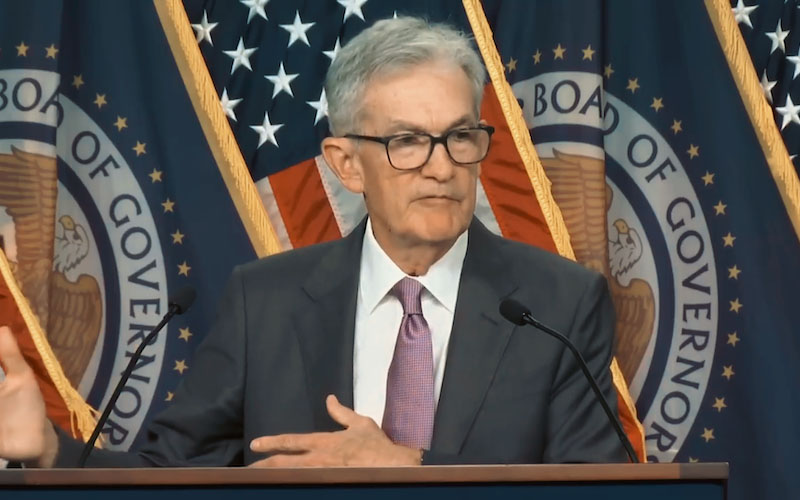With interest rate cuts imminent and inflation at stake, will USD/CAD retest 1.3723?
2025-09-16 20:05:45

Fundamentals:
Statistics Canada will release the August Consumer Price Index (CPI) on Tuesday. Consensus forecast: The headline CPI will rise to 2.0% year-on-year, up from 1.7% in July, and remain at +0.1% month-on-month. The Bank of Canada's preferred "core" measure was 2.6% year-on-year in July, and +0.1% month-on-month; another closely tracked core average is expected to remain unchanged at 3.05% in August, echoing concerns within the Bank of Canada about "sticky inflation." On July 30, the Bank of Canada held its benchmark interest rate at 2.75%. Governor Tiff Macklem emphasized that recent price stickiness persists, but not all pressures are permanent: a stronger Canadian dollar, slower wage growth, and economic activity below potential should keep inflation low over time.
The labor market weakened for two consecutive months in August and July, creating room for monetary easing. Policy pricing also suggests a near-consensus for a 25 basis point rate cut to 2.50% on Wednesday. If inflation exceeds expectations tonight, especially if core indicators rise again, the Bank of China may adopt a more cautious approach in its communication. Conversely, if inflation declines and is confirmed, a "step-by-step" easing path will be more sustainable.
Regarding external variables, the upward transmission of tariff-related costs remains a significant risk. If input-related price increases accelerate through the consumer market, the inflation curve could see a second surge, prompting the Bank of China to adopt a data-dependent and gradual approach to communication. Regarding timing, short-term volatility typically increases significantly within an hour of data release, which is reflected in the market through spreads and order book liquidity.
Technical aspects:
The daily Bollinger Bands are showing a mild convergence, with the middle band at 1.3811 flattening from its upward trend since mid-August, indicating a slowdown in trend momentum. The upper band at 1.3898 and the lower band at 1.3723 form a short-term range. The current candlestick body is around 1.3750, slightly below the medium-term average.

MACD DIFF = 0.0007, DEA = 0.0013, and MACD on the histogram = -0.0012, indicating that the price has not yet formed a clear upward momentum resonance, and the momentum structure is closer to "weak divergence near the zero axis - rebalancing." RSI (14) is 44.8597, in the "neutral slightly bearish" range, and has not triggered the oversold threshold. It tends to continue the sideways trend or maintain "weak oscillation - direction undetermined" before fundamental catalysts.
In terms of price structure, 1.3723 (lower Bollinger band) is the current dynamic support level. A break below it on heavy volume and a failed retest would open up potential for an extension towards the previous low cluster. 1.3539 is further static support and a sentiment anchor. Above, resistance lies at 1.3811 (middle band) and 1.3898 (upper band). If a sentiment-driven volume breakout leads to a recapture and stabilization of the middle band, a pullback to the previous high near 1.3924 is possible. The lack of significant expansion in the Bollinger Band width suggests a diminishing marginal advantage for trend trading, with mean reversion and box-shaped trading more in line with the market.
Market outlook:
Scenario 1 (CAD Stronger/USD/CAD Lower): If both the headline CPI and core figures exceed expectations, the Bank of Canada will become more cautious in its communication of further easing, potentially forcing a slight upward shift in the front end of the yield curve, providing immediate support for the CAD based on fundamental analysis. Technically, the exchange rate is testing 1.3723 and attempting a retest of its validity. If a "valid breakout" is achieved with volume support, the daily chart structure is expected to extend towards the lower congestion zone. In the long term, watch for the formation of a "double bottom - right-side confirmation" at 1.3539. However, as the RSI is not oversold, further declines will require further fundamental support.
Scenario 2 (CAD Weaker/USD/CAD Upward): If inflation is as expected or even lower than expected, and weak labor data is coupled with further supportive policy signals from the Bank of Canada, the market's pricing in a year-end 2.25% rate will become more resolute, putting pressure on the CAD. If the exchange rate reclaims 1.3811 and retests to confirm it, upside potential is likely to target 1.3898. If sentiment drives a "volume breakout," a test of 1.3924 is possible. Given that the MACD is still fluctuating around zero, the risk of a false breakout should not be ignored. It is important to monitor the strength of the retest after the breakout and whether trading activity is consistent. Otherwise, a return to the range is likely.
Time dimension: Short-term (intraday to several days) tends to be "event-driven volatility trading", and the direction depends on the deviation of the CPI landing point from expectations; medium-term (several weeks) still uses "data dependence + steady easing" as the main narrative. Unless core inflation accelerates significantly again, it will be difficult to drive a "unilateral upward trend" or "unilateral downward trend" at the daily level.
- Risk Warning and Disclaimer
- The market involves risk, and trading may not be suitable for all investors. This article is for reference only and does not constitute personal investment advice, nor does it take into account certain users’ specific investment objectives, financial situation, or other needs. Any investment decisions made based on this information are at your own risk.





















